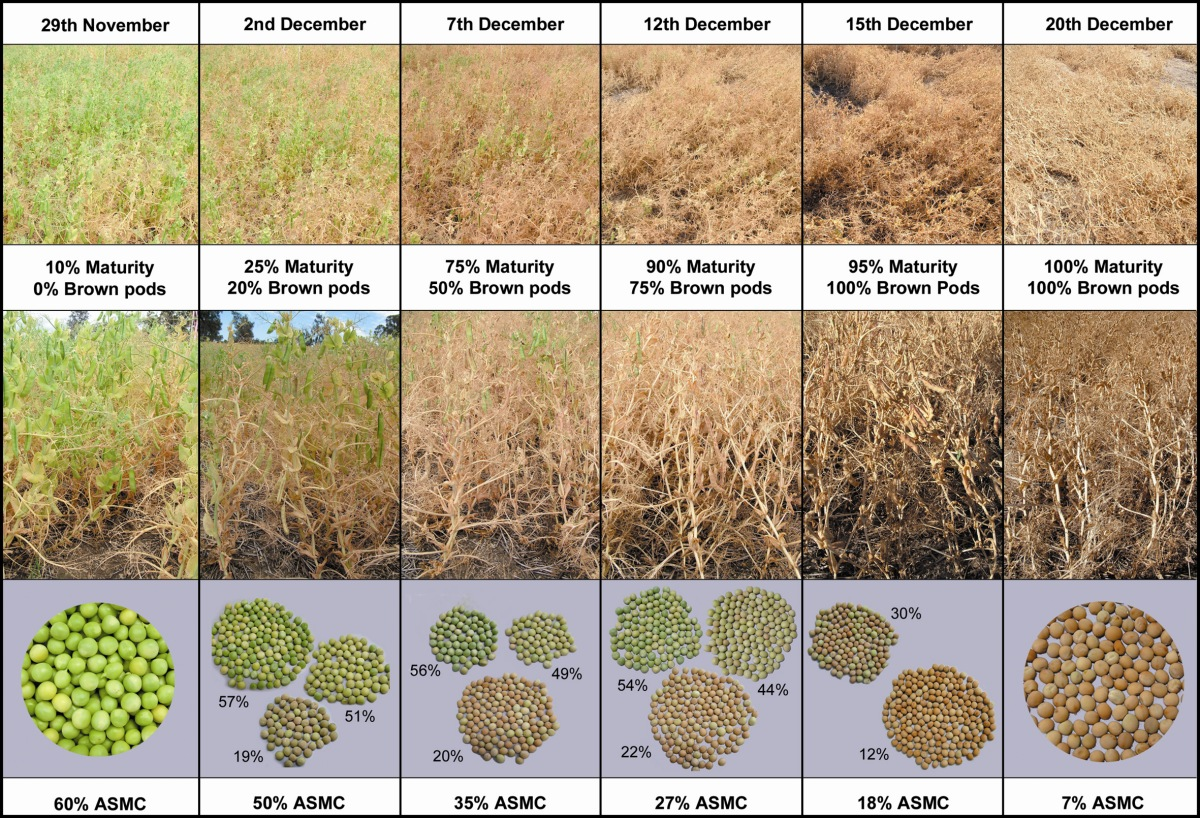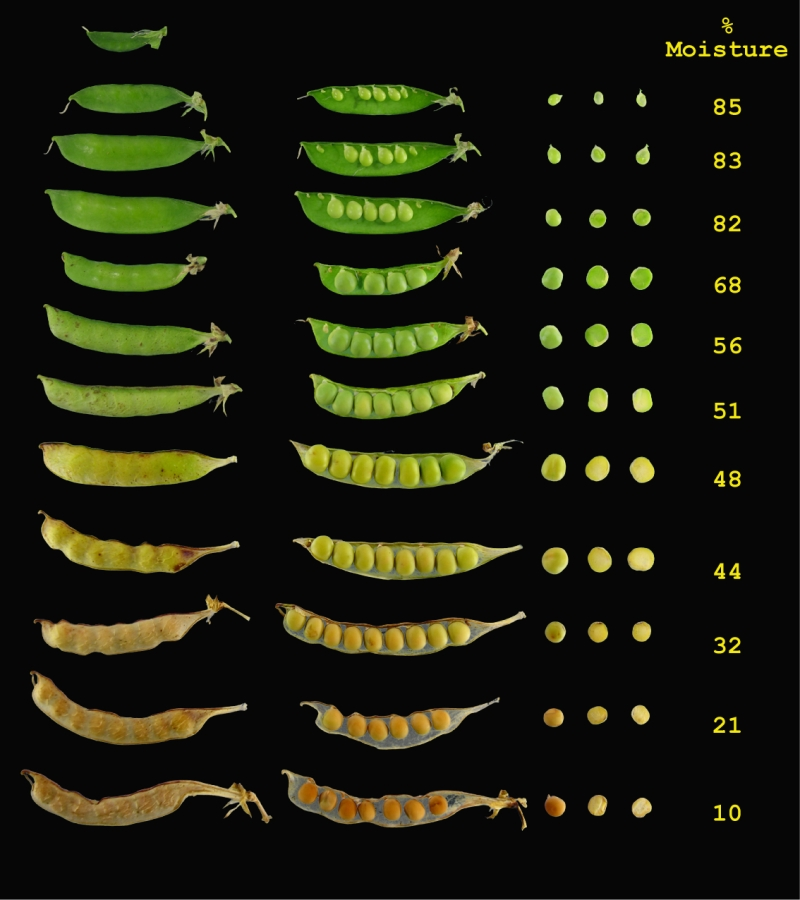Within a crop there is likely to be considerable variability, particularly at maturity and harvest. Therefore, it is often necessary to estimate either the average or majority development stage of a crop. At first this is best done numerically, but with experience it can be estimated by eye.
Know your nodes
Counting the number of nodes on the main stem of field pea is the key to safely applying herbicides (Table 1). It is the system researchers around the world use when testing new herbicides and the system most labels use.
Individual field pea plants will have a dominant main stem and several basal branches, with the main stem simply being the longest one you can find. All references to node number on labels and so on refer to the number of nodes on the main stem.
| Herbicide | Crop stage (as per herbicide label) |
|---|---|
| Grass herbicides | From 2-node |
| Metribuzin | 3-node |
| Imazamox | Do not apply beyond the 4-node stage |
| Diflufenican | After 3-node and before flowering |
| Flumetsulam | 2-node to 6-node, no later than six weeks after emergence |
| Cyanazine | Between 3-node and 5-node stage |
| MCPA Na | 6-node to 8-node, 10-15cm tall. Do not apply if flowering has begun* |
| Paraquat | No specific crop guide on label. In practice, when 75% of the crop has brown pods |
| Diquat | As soon as crop has reached full maturity |
| Glyphosate | At or after crop maturity. When average seed moisture content is below 30% |
* Varieties grown in Western Australia are unlikely to be at 6-node to 8-node when flowering.
When field pea emerges, two small scale or scar leaves appear. The scar leaves do not form stipules and are therefore not counted. This is best shown in Figure 1 which is at the 3-node stage. When counting nodes, only count those where the stipule leaves are fully unfolded.

Seed filling, maturity and harvest
Most field pea crops in Western Australia are crop-topped to even up maturity and reduce weed seed set. Swathing is gaining in popularity, particularly with semi-leafless varieties which are less prone to shedding and blowing in the wind. It is important to get the timing of swathing, crop-topping and harvest right, to maximise yield and grain quality. This is best done by measuring the average seed moisture content (ASMC). For example, swathing should begin once ASMC reaches 45%, crop-topping at 25-30% and harvest at 14-16%.
ASMC can be ascertained in a number of ways:
- Pick 10-20 stems at random and sub-sample sufficient seed to fill a moisture meter, which works well for harvest samples but is not very accurate with high moisture samples near swathing and croptopping.
- Pick 10-20 stems at random and sample all the seed, weigh the wet sample and then desiccate/dry until constant weight. ASMC (%) = 100 x (wet weight-dry weight)/wet weight.
Alternatively, the appearance (colour, opacity) or texture of the pods, the seed or whole plants (for example, percent maturity) may be used to estimate the correct timing of these operations (Figure 2 and 3).


Acknowledgments
Funding was provided by the Grains Research and Development Corporation and the Department of Primary Industries and Regional Development.
